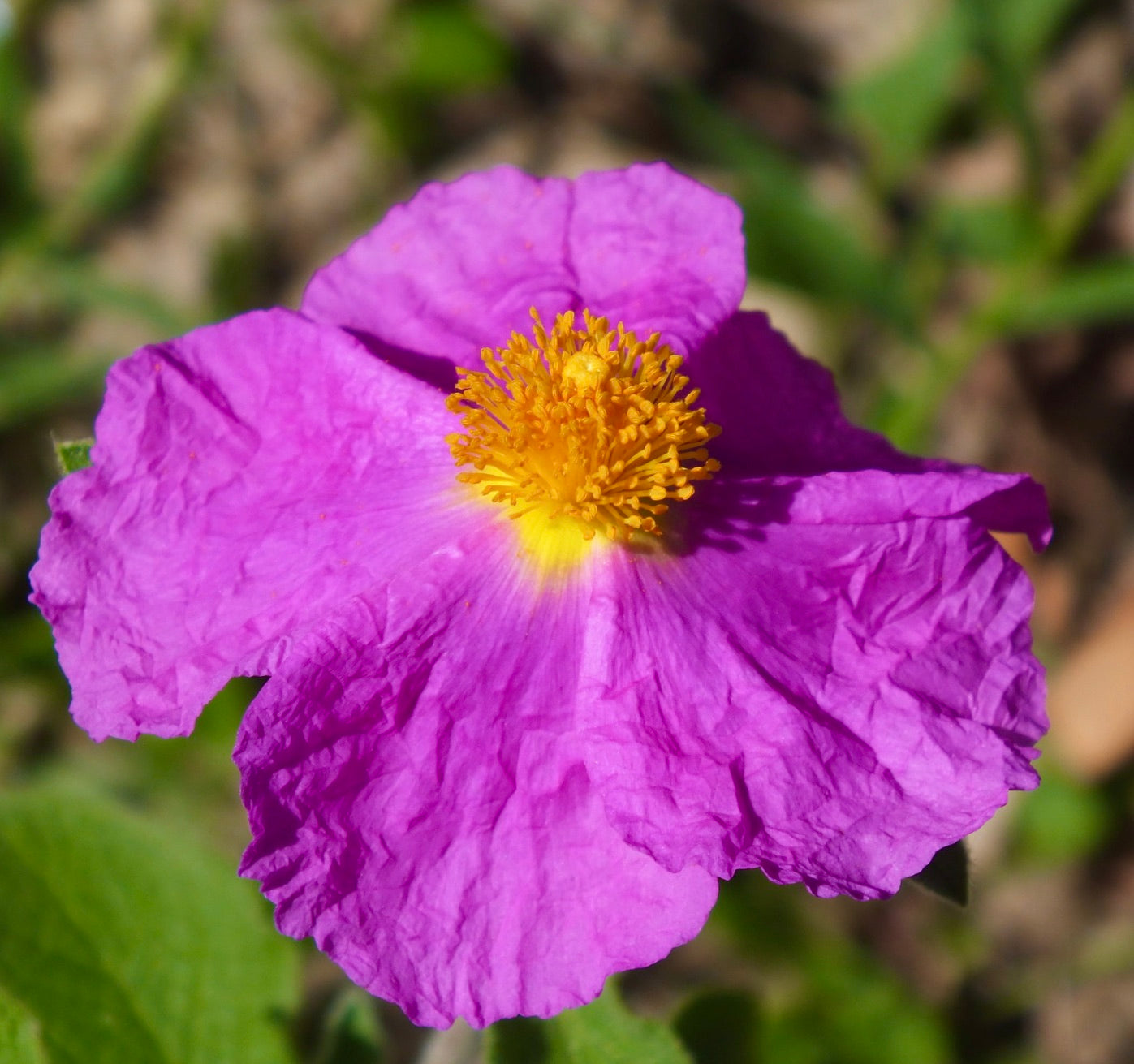- Catalogue Plants
Cistus incanus 30-50cm
Cistus incanus 30-50cm
Couldn't load pickup availability
Plant Description
Cistus incanus, commonly known as pink rockrose or hoary rockrose, is a small evergreen shrub native to the Mediterranean region. It is appreciated for its profusion of pink to purplish-pink flowers and aromatic foliage.
-
Size: Cistus incanus typically grows to a height of 2 to 4 feet (60 to 120 cm) with a similar spread. It has a compact, bushy growth habit.
-
Leaves: The leaves are small, oval, and covered with fine, silvery-gray hairs, giving them a hoary appearance. When crushed, the leaves emit a pleasant resinous scent.
-
Flowers: The most striking feature of Cistus incanus is its abundance of papery, five-petaled flowers that appear in late spring to early summer. The flowers are typically pink to purplish-pink and have a bright yellow center. They have a crinkled appearance, which adds to their charm.
-
Fruit: After flowering, the plant may produce small, woody capsules containing tiny seeds.
Cultivation:
-
Climate: Cistus incanus thrives in Mediterranean climates but can also adapt to other regions with mild, temperate weather. It is drought-tolerant and prefers areas with dry summers and mild, wet winters.
-
Sunlight: Plant Cistus incanus in a location that receives full sun. It requires at least 6 to 8 hours of direct sunlight daily to produce abundant flowers and maintain its compact growth habit.
-
Soil: This shrub prefers well-draining, slightly alkaline to neutral soils. It can tolerate poor, rocky soils and is well-suited for gravelly or sandy conditions.
-
Watering: Once established, Cistus incanus is drought-tolerant and does not require frequent watering. Water sparingly during the growing season, and allow the soil to dry out between waterings. Avoid overwatering, as it can lead to root rot.
-
Mulching: Applying a layer of organic mulch around the base of the plant can help conserve soil moisture, regulate soil temperature, and control weeds.
-
Pruning: Prune Cistus incanus lightly after flowering to maintain its shape and encourage new growth. You can also remove dead or leggy stems at this time.
-
Fertilizing: Generally, Cistus incanus does not require heavy fertilization. If the soil is poor, you can apply a balanced, slow-release fertilizer in the spring.
-
Pests and Diseases: This shrub is relatively resistant to pests and diseases. However, you should monitor for common issues like aphids and scale insects, as well as root rot in poorly drained soil.
-
Propagation: Cistus incanus can be propagated from semi-hardwood cuttings taken in late summer or early autumn. Allow the cuttings to root in well-draining soil or a suitable rooting medium.
Cistus incanus is a delightful addition to Mediterranean-style gardens, rock gardens, and dry, sunny landscapes. Its profusion of pink flowers and aromatic foliage make it a visually appealing and low-maintenance plant that can thrive in various garden settings. With proper care, it can add beauty and fragrance to your outdoor space.
Disclaimer: Please keep on mind that the plant may have grown since pictured. Also be aware that most plants change across seasons. If present foliage could have been fallen or change in its color.
Botanical family: Cistaceae
Botanical genus: Cistus
Botanical species: Cistus incanus
SKU:BA-0699-S
Cultivation
Cultivation
Additional information
Additional information
Plant Height: 30-50cm
Plant Diameter:
Picture Taken on:
Pot Size:
Grafted/Not Grafted:


